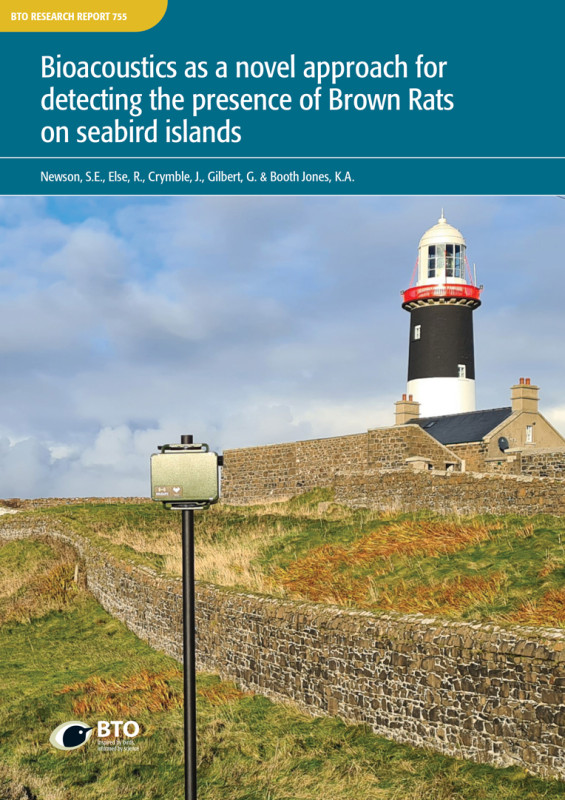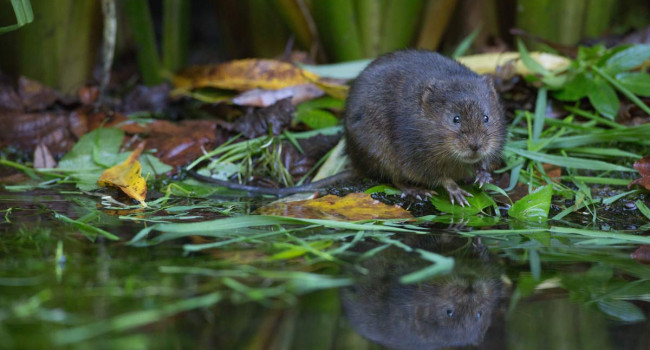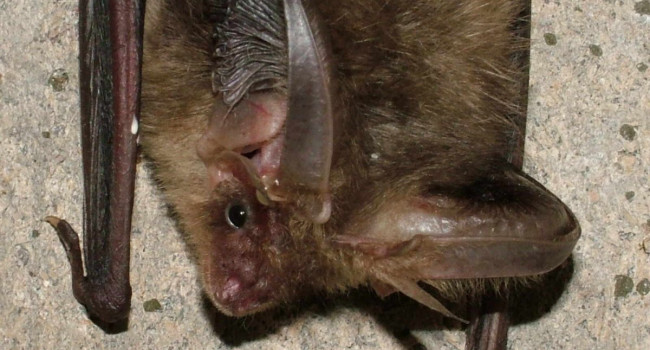Bioacoustics as a novel approach for detecting the presence of Brown Rats on seabird islands

Author(s): Newson, S.E., Else, R., Crymble, J., Gilbert, G., Tosh, D.G. & Booth Jones, K.A.
Published: July 2023 Issue No.: 755
Publisher: British Trust for Ornithology Pages: 31pp
ISBN: 978-1-912642-51-9
Download article 3.03 MB application/pdf
Static acoustic bat detectors were deployed over a six-month winter survey season, to explore the possibility for using acoustics to detect and monitor the presence of Brown Rats on Rathlin Island in Northern Ireland. This report provides an overview of the survey coverage and main results from 2022/23.
- This research used the BTO Acoustic Pipeline to process and analyse sound recordings.
Abstract
Static acoustic bat detectors were deployed over a six-month winter survey season, to explore the possibility for using acoustics to detect and monitor the presence of Brown Rat, Rattus norvegicus, on Rathlin Island in Northern Ireland. This report provides an overview of the survey coverage and main results from 2022/23.
During the winter of 2022/23, 48 different locations across Rathlin Island were surveyed. Recording was undertaken on 113 different nights mainly between mid November and the end of February, amounting to a total of 301 nights of recording effort across sites. Sound recordings (wav files) were uploaded to the BTO Acoustic Pipeline, where a first automated analysis was carried out and provisional results returned. Recordings were then moved to deep glacial storage for later auditing. At the beginning of March, a copy of the recordings was pulled back, and manual auditing of the results / recordings carried out.
Overall, 312,768 recordings were collected which, following analyses and validation, were found to include 185 small terrestrial mammal recordings, and 810 bat recordings. Following validation, the study confirmed the presence of three small mammal species, including Brown Rat, and four bat species. The timing of fieldwork during the winter was outside the active period for bats, which is why there are so few bat recordings.
This is the first acoustics study that we have carried out during the winter, but we expected more recordings of Brown Rats, which means that we are left with some questions. In particular, how active and vocal are Brown Rats during the winter, and whether the distribution of this species during the winter is likely to influence the probability of detecting this species. Work in the Channel Islands between April and October has found Brown Rat to be an easy species to record. For this reason, we recommend that the project is extended to continue to deploy bat detectors into the spring and summer.
The report includes a full species-by-species breakdown of spatial, seasonal, and through-the-night patterns of activity.








Share this page